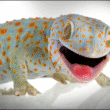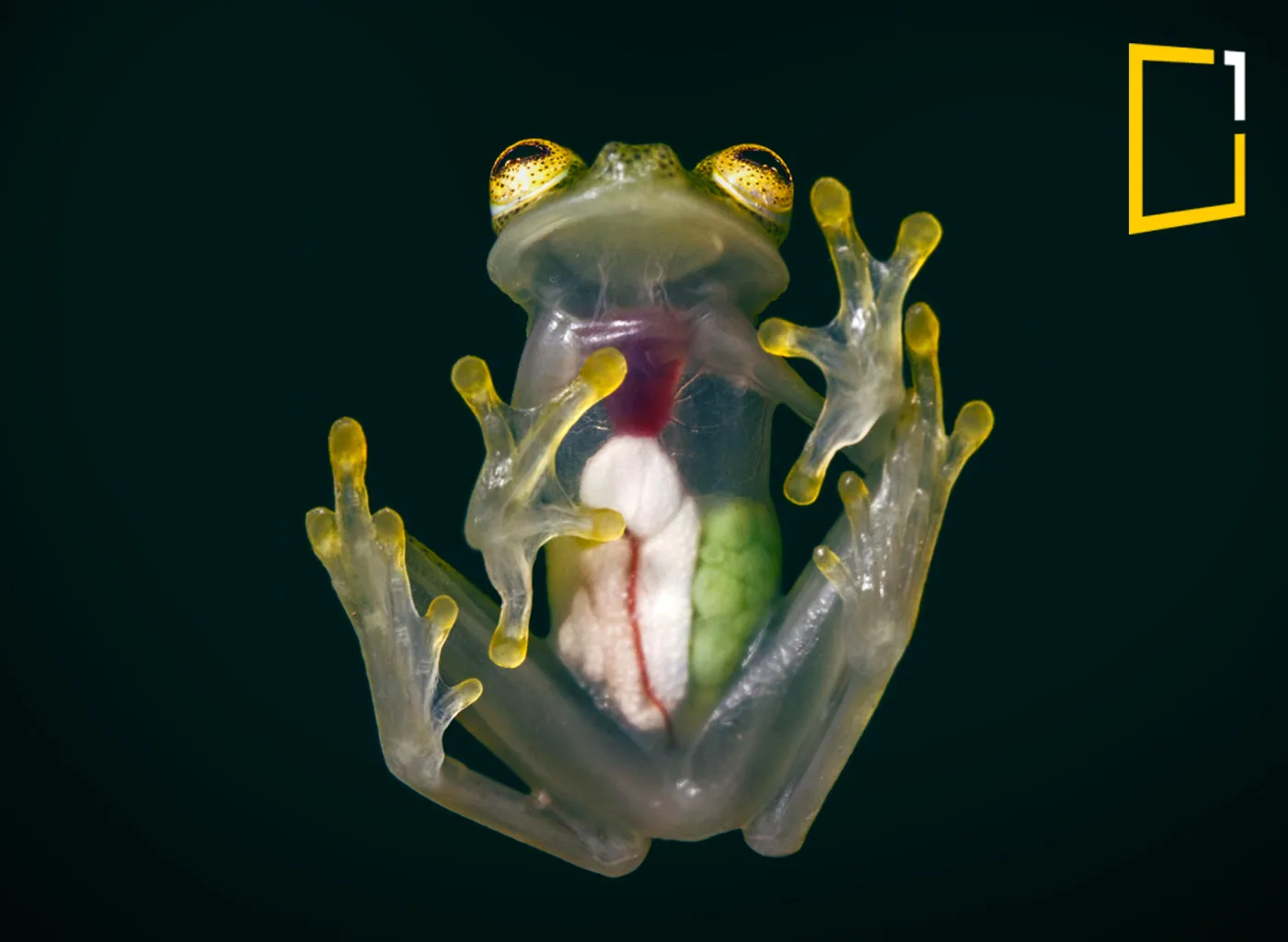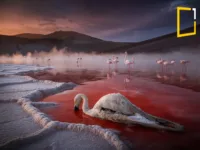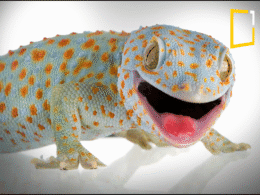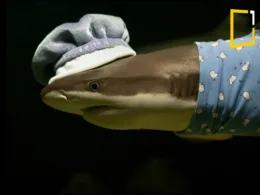Have you ever seen a frog so transparent you could literally see its heart beating? Meet the glass frog—one of nature’s most fascinating and mysterious creatures. Found in the rainforests of Central and South America, these tiny amphibians have an extraordinary feature: their translucent skin, which makes their internal organs visible.
But why would an animal evolve to be nearly invisible? How does it survive in the wild? And what role does it play in its ecosystem? Let’s dive into the mesmerizing world of the glass frog, exploring its unique adaptations, behavior, and the threats it faces in today’s rapidly changing world.
What is a Glass Frog?
The glass frog (family Centrolenidae) is a small tree-dwelling amphibian known for its semi-transparent skin, primarily on its underside. When viewed from below, you can see its beating heart, intestines, and even its liver—a truly surreal sight.
🌿 Where Do Glass Frogs Live?
Glass frogs are found in the dense, humid rainforests of Costa Rica, Panama, Colombia, Ecuador, and Peru. They thrive in high-altitude cloud forests near fast-flowing rivers and streams, where they rely on the water for reproduction.
🐸 How Big Are They?
Most glass frogs are tiny, measuring between 0.8 to 3 inches (2 to 7.5 cm) in length—about the size of a walnut!
The Perfect Gift for Kids is Here! 🎨
Looking for a fun, creative, and engaging way to keep your little ones entertained?

Our Digital Coloring & Activities Book is the ultimate solution! Packed with 26 pages of coloring pages, puzzles, mazes, games, and more, this printable PDF is designed to spark creativity and keep kids busy for hours.
👉 Get your’s now and make playtime unforgettable! Don’t wait – this deal won’t last forever! Use code onem50book and get 50% Off today! 🚀 🖍️ Let Your Kids’ Creativity Run Wild!
Why Are Glass Frogs Transparent?
Their semi-transparency is one of the most bizarre evolutionary traits in the animal kingdom. But why would nature favor this? Scientists believe transparency serves as a camouflage strategy, helping them blend into their surroundings in an unconventional way.
🔍 How Does Transparency Help Them Hide?
Unlike chameleons, which change color to blend into the environment, glass frogs use their see-through skin to reduce shadows, making them harder to detect from below. This optical illusion confuses predators like birds, snakes, and larger amphibians.
🔬 The Science Behind Their See-Through Skin
Unlike other transparent animals like jellyfish, glass frogs have a unique way of distributing hemoglobin (red blood cells). When resting, they store up to 90% of their red blood cells in their liver, temporarily making them appear even more transparent. This discovery has fascinated scientists and could even help in medical research!
The Secret Life of Glass Frogs
🌙 Nocturnal Creatures
Glass frogs are nocturnal, meaning they are most active at night. Under the cover of darkness, they move through the treetops, searching for insects to eat and mates to attract.
🎶 A Frog with a Melodic Call
Male glass frogs are famous for their high-pitched, melodic calls, which they use to attract females and defend their territory from rival males. Their calls can often be heard echoing through the rainforest on warm, humid nights.
🐸 Glass Frog Parental Instincts
Unlike many amphibians, male glass frogs are dedicated fathers. After a female lays her eggs on the underside of leaves hanging over streams, the male stays behind to guard them. He will protect the eggs from predators like wasps and even hydrate them by absorbing water through his skin and dripping it onto the eggs.
Once the eggs hatch, the tadpoles fall directly into the water below, where they continue their development into adult frogs.
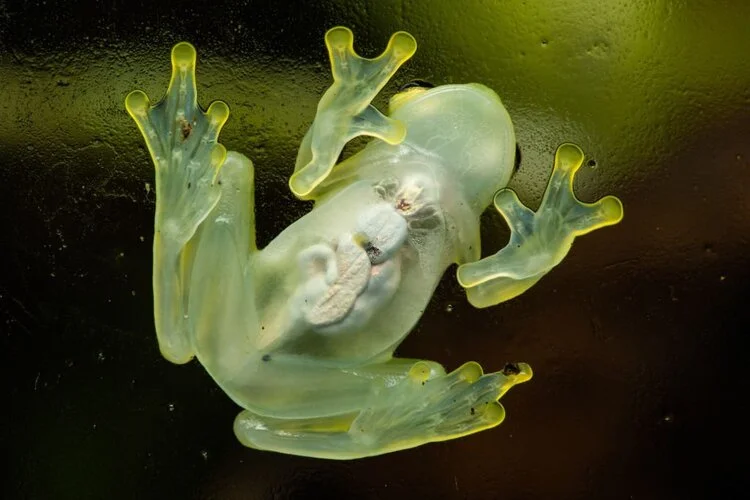
Threats Facing Glass Frogs
Despite their remarkable adaptations, glass frogs are increasingly at risk due to human activity.
🌍 Deforestation and Habitat Loss
Large-scale deforestation, driven by agriculture, logging, and urbanization, is destroying the fragile rainforest ecosystems where glass frogs thrive.
☠️ Climate Change
Rising temperatures and unpredictable weather patterns disrupt breeding cycles and dry up the rivers they depend on.
🐸 Illegal Pet Trade
Due to their unique appearance, glass frogs are highly sought after in the exotic pet trade, leading to illegal capture and declining wild populations.
🦠 Deadly Fungal Infections
Like many other amphibians, glass frogs are vulnerable to chytridiomycosis, a deadly fungal disease wiping out frog populations worldwide.
Why Glass Frogs Matter
Glass frogs play a crucial role in maintaining the health of their ecosystems.
✅ They Control Insect Populations – By feeding on insects, they help regulate insect populations, reducing the spread of diseases like malaria and dengue fever.
✅ They Indicate Ecosystem Health – Amphibians are considered bioindicators, meaning their presence (or absence) signals the overall health of their environment. Declining frog populations often indicate broader environmental issues.
✅ They Inspire Scientific Research – Their unique blood storage mechanism could lead to breakthroughs in human medicine, particularly in organ transplantation.
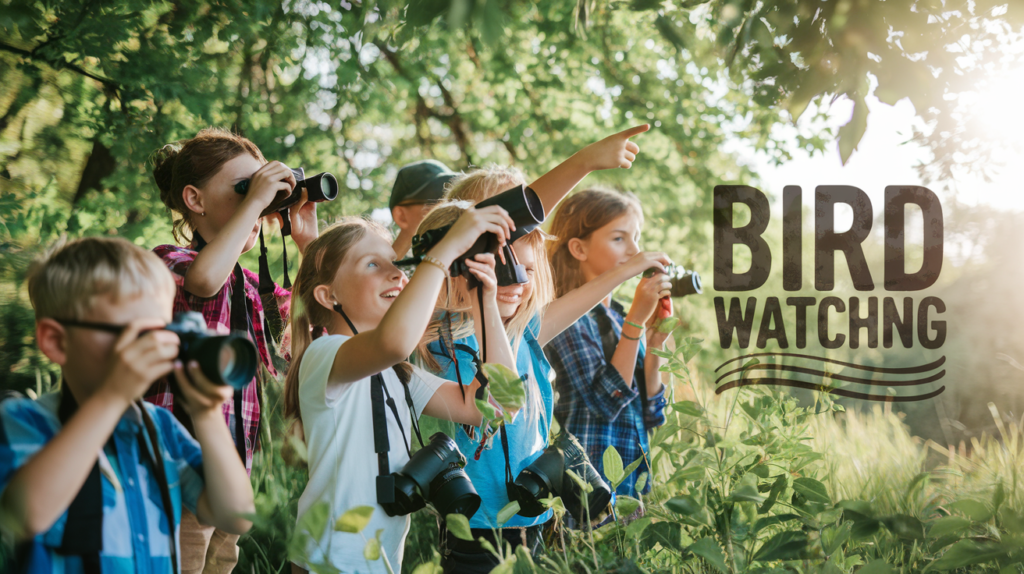
Ready to Spread Your Wings?
Dive into the fascinating world of bird watching with “Bird Watching for Beginners”—your ultimate guide to becoming a birding expert! Whether you’re a nature lover or a curious beginner, this ebook has everything you need to start your journey. Click here to download your copy today and start exploring the beauty of birds!
How Can We Protect Glass Frogs?
Support Rainforest Conservation Efforts 💚 – Donate to organizations like the Rainforest Trust and World Wildlife Fund (WWF) that work to protect critical habitats.
🚫 Avoid Buying Exotic Pets – The demand for glass frogs in the pet trade fuels illegal capture and endangers wild populations.
🌱 Reduce Deforestation – Choose sustainable products, support reforestation projects, and raise awareness about the importance of rainforests.
Glass frogs are one of nature’s most mesmerizing species, but they need our help to survive. By making conscious choices and supporting conservation efforts, we can ensure that these incredible creatures continue to thrive in their rainforest homes.
Would you love to see a glass frog in the wild? Let us know in the comments!
—————————————————————
Thanks for joining this wild ride. Stay curious, stay tuned, and let’s make our world brighter!
Subscribe to our channel and stay tuned for more intriguing mysteries and scientific wonders. Together, let’s uncover the secrets of the Earth and expand our understanding of this fascinating world.
Check out the latest blog and video on YouTube and learn something new today.
Attention, all readers! To deepen your understanding and stay informed on the latest news and trends, be sure to click on the link to access more informative articles.
Join the family by liking us on Facebook, or follow us on Twitter and Instagram.
If you liked this story, sign up for the weekly OneMinuteExplore features newsletter called “The Essential List”. A handpicked selection of stories from OneMinute Nature, Wildlife, Culture, Travel, Stories, and more… delivered to your inbox every Weekend.
👉 We may earn a commission from purchases made through links in this content, but it won’t affect your price. Rest assured, our recommendations are based on thorough research and genuine belief in the products. Your support through these links helps us continue providing valuable content. Thank you for being so supportive!



